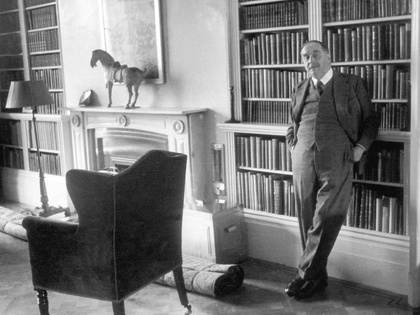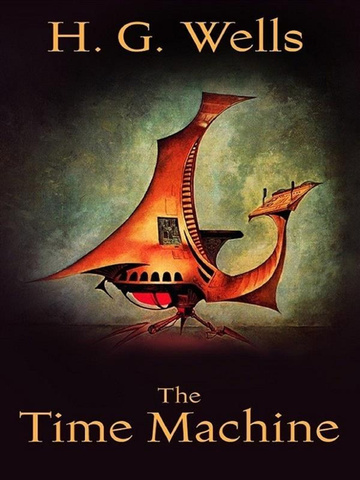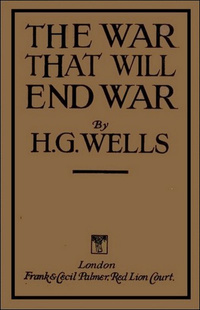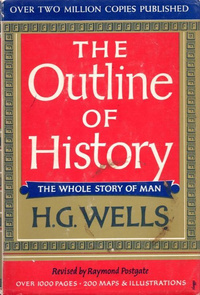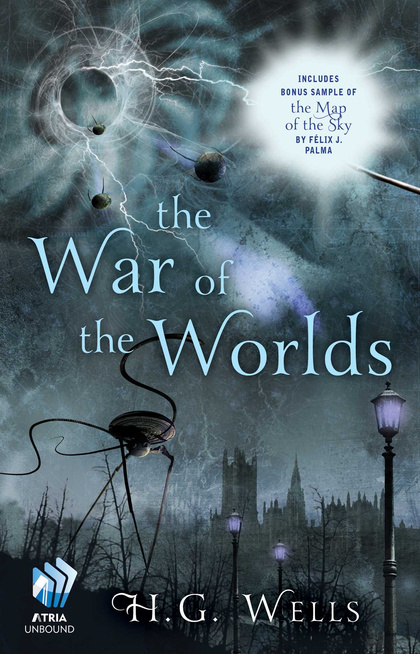
H.G. Wells
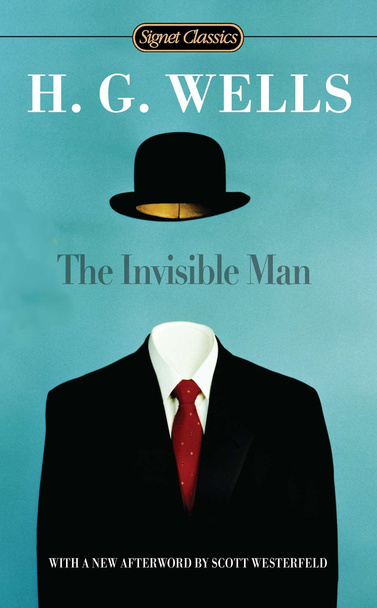
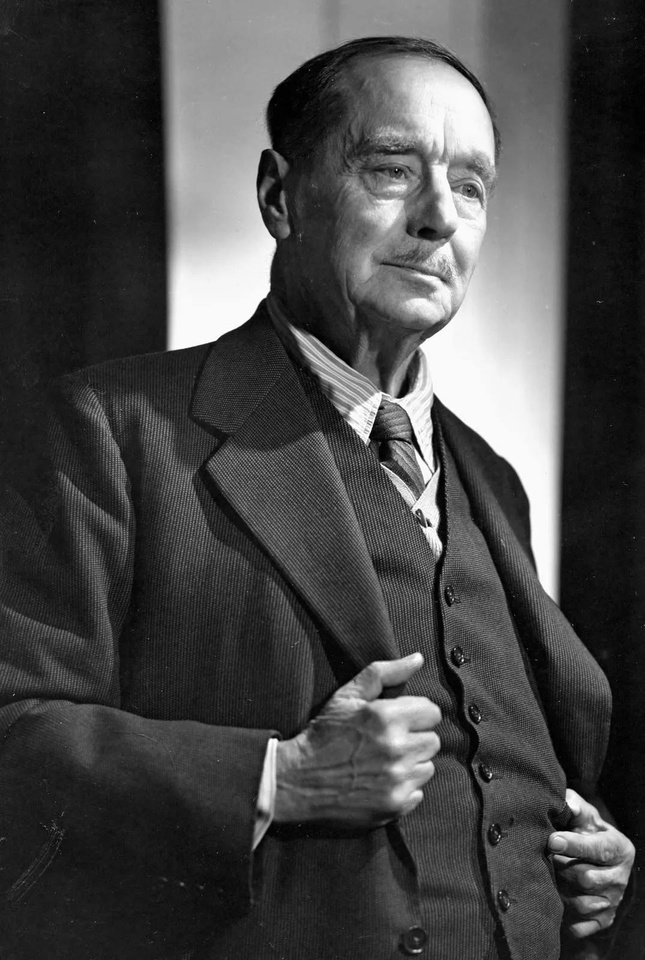
Home Page
List of Published Works
Table of Contents
Overview of Author
H. G. Wells was a science-fiction author who wrote during the Victorian era of literature. He is also commonly known as the father of science-fiction because he was one of the first authors to write science-fiction novels. H. G. Wells lived from 1866 to 1946.
Novels
- The Time Machine (1895)
- The Wonderful Visit (1895)
- The Island of Doctor Moreau (1896)
- The Wheels of Chance (1896)
- The Invisible Man (1897)
- The War of the Worlds (1898)
- When the Sleeper Wakes (1899)
- Love and Mr. Lewisham (1900)
- The First Men in the Moon (1901)
- The Sea Lady (1902)
- The Food of the Gods and How It Came to Earth (1904)
- Kipps (1905)
- A Modern Utopia (1905)
- In the Days of the Comet (1906)
- The War in the Air (1908)
- Tono-Bungay (1909)
- Ann Veronica (1909)
- The History of Mr. Polly (1910)
- The Sleeper Awakes (1910)
- The New Machiavelli (1911)
- Marriage (1912)
- The Passionate Friends (1913)
- The Wife of Sir Isaac Harman (1914)
- The World Set Free (1914)
- Bealby: A Holiday (1915)
- Boon (1915)
- The Research Magnificent (1915)
- Mr. Britling Sees It Through (1916)
- The Soul of a Bishop (1917)
List of Published Works Continued
- Joan and Peter: The Story of an Education (1918)
- The Undying Fire (1919)
- The Secret Places of the Heart (1922)
- Men Like Gods (1923)
- The Dream (1924)
- Christina Alberta's Father (1925)
- The World of William Clissold (1926)
- Meanwhile (1927)
- Mr. Blettsworthy on Rampole Island (1928)
- The Autocracy of Mr. Parham (1930)
- The Bulpington of Blup (1932)
- The Shape of Things to Come (1933)
- The Croquet Player (1936)
- Brynhild (1937)
- Star Begotten (1937)
- The Camford Visitation (1937)
- Apropos of Dolores (1938)
- The Brothers (1938)
- The Holy Terror (1939)
- Babes in the Darkling Wood (1940)
- All Aboard for Ararat (1940)
- You Can't Be Too Careful (1941)
Non-fiction
- The War That Will End War (1914)
- An Englishman Looks at the World (1914)
- The Elements of Reconstruction (1916)
- God the Invisible King (1917)
- Russia in the Shadows (1920)
- A Year of Prophesying (1925)
- The Way the World is Going (1928)
- The New America: The New World (1935)
Link to bibliography here
The Erroneous Chronology of The Time Machine
Critic Bruce David Sommerville has analyzed the chronology of H.G. Wells' novel The Time Machine by exposing its inconsistencies and erroneous nature. One major argument Sommerville makes is that the Time Traveler, who is the main protagonist of the novel, "has dreamed the entire future adventure." Similarly, because of his belief that the Time Traveler has dreamt up the whole adventure, Sommerville claims that the dream is "part of an elaborate hoax." This has been supported by a deep analysis of certain paragraphs in the novel in which the Time Traveler states the times he had departed and returned. For example, Sommerville remarks how the Time Traveler claimed to have returned from time traveling at three thirty in the afternoon, but, at eight o'clock that same night, he greets his dinner guests as though he had just returned. Sommerville treats these times stated by the Time Traveler as puzzle pieces, and he lays them all out to identify the inconsistencies in the Time Traveler's story and come to the conclusion that the Time Traveler was dreaming.
Sexuality in Wells' Novels
Critics have also examined sexuality in Wells' novels, connecting it to confessions of sexual affairs in Wells' life and to religion. Critic Andrew Brink claims that the confessions are not about failing to please God but rather about "guilt," "inadequacy," "regrets," and "remorse" over "failed sexual relationships in a life of many loves." One of Wells' major affairs was with Amber Reeves while he was married to Amy Catherine Robbins. This affair resulted in the confessional novels of In the Days of the Comet (1906), Ann Veronica (1909), and The New Machiavelli (1911). The novel In the Days of the Comet (1906) has often been seen through the lens of sexual pluralism against monogamy, which reflects Wells' affair. The main protagonist of the novel, Willie Leadford, falls in love with a girl named Nettie, but a new girl, Anna Reeves, appears. Willie then also falls in love with Anna. Willie clearly represents Wells, while Nettie represents Amy Catherine Robbins and Anna represents Amber Reeves. The message of free love in this novel was Wells' attempt at justifying the affair he was having. Similarly, in Ann Veronica (1909), Ann Veronica falls in love with Capes, a man who is ten years older than her. Ann is supposed to represent Amber Reeves, once again, and Capes is supposed to represent Wells. However, this novel focuses more on justifying the age gap between the two, since Wells was much older than Amber.
Link to bibliography here
What Critics have Said Continued
Sexuality in Wells' Novels Continued
The New Machiavelli (1911), according to Brink, examines the question "why not" when it comes to being guided solely by sexual desires. In the novel, Wells' life is retold from his childhood years to his later years from the point of view of the main character, Remington. The story is not completely accurate to Wells' life, but it does highlight events that had significant impacts on his personal development. Wells writes about these developmental events in the novel in an attempt to justify his sexual desires and needs later in life and his affair with Amber Reeves, similar to In the Days of the Comet (1906) and Ann Veronica (1909).
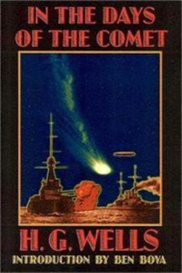
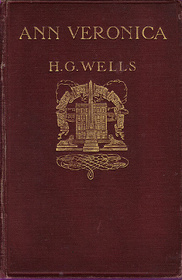
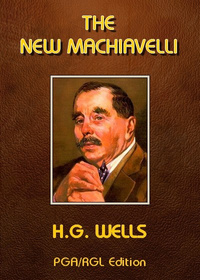
The Time Machine as an Ecotopian Novel
The term ecotopia refers to a world dedicated to using only renewable materials, renewable energy, and green building construction. William Morris's novel News from Nowhere (1890) is often called the prototype for ecotopian literature, and critic Jan Hollin highlights how Wells' The Time Machine (1895) is influenced by Morris's novel. According to Hollin, News from Nowhere (1890) had so much influence on The Time Machine (1895) that what the Time Traveler thought when arriving in the future "make[s] one think that the Time Traveler had finished reading News from Nowhere" just before traveling to the future. She then goes on to talk about how the Time Traveler discovers that, in the future, England has been transformed into a big garden. This clearly reflects an ecotopian society, as gardens can be used as very sustainable sources of materials, energy, and food.

Link to bibliography here
What Critics have Said Continued
Imagery in The Time Machine
Critic David J. Lake analyzes the imagery in Wells' novel The Time Machine, specifically focusing on the White Sphinx. In speculating on why Wells chose a Sphinx and why it is white, Lake concludes that it is a Sphinx in order to represent the Sphinx that confronted Oedipus in Greek myth. In Greek myth, the third part of the riddle that the Sphinx gave Oedipus mentions a man tottering three-legged on a staff in old age. Thus, Lake remarks that, in The Time Machine, the "leprous, crumbling Sphinx" represents the "'three-legged' stage, the decay of Man in the future world." Lake also explains why Wells chose to make the Sphinx white, saying that it is "the whiteness not only of leprosy but also of bone." This analysis highlights the importance of imagery in Wells' works and how he uses it. It shows that even the simplest forms of imagery, like colors, can have a significant meaning in the story.
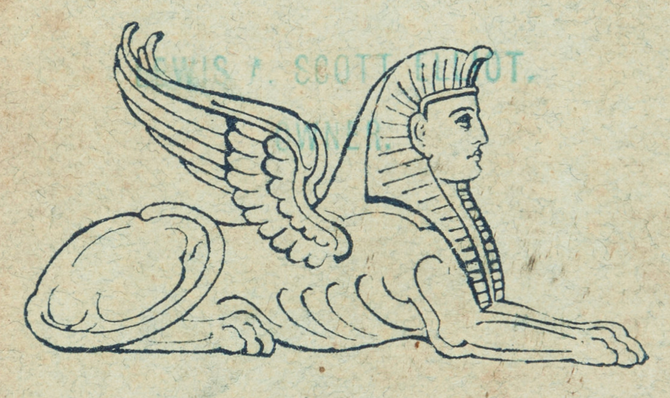
Link to bibliography here
Enduring Understandings - Characters
Oftentimes in H.G. Wells’ novels, he utilized the characters in his stories to represent specific societal norms of his time. Some common themes of characters in his stories have been intellectual protagonists, antagonists that represent societal norms of his time that he did not agree with, and outcasts or members of marginalized groups.
Many of H.G. Wells’ novels feature a protagonist who is an intellectual or a scientist. For example, in The Time Machine, the protagonist is the Time Traveller, a very smart man who has discovered the secret of time travel. In another of Wells’ novels, The War of the Worlds, the protagonist is once again an intellectual, this time in the form of a philosopher. Both of these protagonists must face troubles in their stories, with the Time Traveler finding himself stuck in the future and the philosopher being confronted with an alien invasion. Hence, both of these characters’ knowledge plays a vital role in allowing them to overcome these troubles. This is Wells’ way of emphasizing the significance of knowledge in a constantly changing world, as it clearly helps in overcoming challenges made by the changed world.
Wells’ novels have also commonly showcased antagonists that represent societal norms of his time that he did not agree with. This is evident in his novel The Time Machine, where the Morlocks are the antagonists and represent the industrial working class. In this novel, the Morlocks are contrasted with the Eloi, who represent the rich, elitist class. By creating these two types of characters, Wells effectively conveys his contempt for the unjust socioeconomic divide that was present during his time. The opposition between the Eloi and the Morlocks in Wells’ novel acts as a critique of the society Wells lived in, and it may suggest that a more equal division of wealth in society is required to make that society just.
Lastly, outcasts and members of marginalized groups have been prominent types of characters in Wells’ novels. For instance, in Wells’ The Invisible Man, the main character is an ordinary man who finds out how to become invisible but does not know how to reverse it, turning him into a social outcast. Similarly, in The Island of Dr. Moreau, the marginalized group is the animal-human hybrids, which are rejected by society. The common pattern of outcasts and marginalized groups in Wells’ novels illustrates that he wants equality and understanding for those groups. Through the use of these characters, Wells clearly understands that outcasts’ and marginalized groups’ differences do not make them any less than other people.
Wells ultimately utilizes characters in his novels to represent the societal norms of his time and his opinion of them. His characters have often represented intellectual protagonists, antagonists that represent societal norms that Wells did not agree with, and outcasts or members of marginalized groups.
Link to bibliography here
Enduring Understandings - Setting
Throughout H.G. Wells’ writing career, he has developed several common patterns in the settings of his novels. It can be seen in his novels that he has consistently utilized futuristic settings, real-world locations, and settings that are in a state of decay and decline.
To begin, several of H.G. Wells’ novels follow the pattern of being set in a futuristic or alternate world. For example, The Time Machine is set in the year 802,701. Similarly, Wells’ novel The War of the Worlds takes place in an alternate world in which aliens have invaded Earth. Through implementing these futuristic settings, H.G. Wells conveys to his readers the possible consequences of scientific and technological advancements. Wells does not exactly use these settings to discourage scientific advancement but rather uses them to warn people that certain advancements may have negative consequences. Thus, with these settings, H.G. Wells demonstrates that science and technology must advance with caution.
Another common theme with the settings of Wells’ novels is his use of real-world locations. For instance, in the novel The War of the Worlds, the aliens begin their invasion in southern England, causing the protagonist to flee to northern England. Wells’ novel The Island of Dr. Moreau also utilizes real-world locations, as it is set on a remote island in the Pacific Ocean. By using these real-world locations in his novels, Wells is able to consistently create a more realistic and believable feeling for readers, which really puts his novels into perspective. The fact that the incredible events of these novels take place in locations the reader is already familiar with causes the reader to always be thinking about the possibility of these events in their own life. This pattern also works to bring the fictional elements of Wells’ novels to reality since the readers are already familiar with the settings.
Lastly, Wells has used settings that are in a state of decay or decline in several of his novels. For example, in The War of the Worlds, the aliens’ weapons destroy everything in their path, causing a breakdown in society. This pattern is paralleled in The Time Machine, as the world of the future has turned into a barren wasteland. Wells uses these settings to criticize the societal norms of his time because these settings are extreme representations of what could happen if these norms are continued. Thus, with his critique, Wells is suggesting that in order for humanity to survive and avoid the settings conveyed in his novels, a more sustainable and equal society is required.
Wells ultimately utilizes setting in several different, common patterns in his novels. His novels have consistently had futuristic settings, real-world locations, and settings that are in a state of decay and decline.
Link to bibliography here
Enduring Understandings - Structure
H.G. Wells, in his writing, has conveyed several distinct patterns in the structure of his novels. Some of the main structural patterns in Wells’ writing have been his use of framing devices, episodic structure, and flashbacks.
To begin, Wells consistently makes use of framing devices in his novels. For example, in The Time Machine, the Time Traveler tells his story of time travel to a group of his guests during dinner. Similarly, in The War of the Worlds, the protagonist tells the story of his experiences during the alien invasion from a first-person perspective. By using these framing devices, Wells is able to effectively create a sense of urgency and credibility to the fictional events of his novels. The use of framing devices creates a second layer to the story that is told by a character within the story, and this second layer stands out to readers more than ordinary text. Thus, the framing devices help the reader understand that the information within them is important and worth paying attention to.
Another prominent structural pattern in Wells’ novels is his episodic structure. For instance, in The War of the Worlds, the story is divided into two main parts: one focused on the alien invasion and the other focused on the protagonist's venture through London. This episodic structure is also seen in The Island of Dr. Moreau, with the novel divided into chapters that each revolve around a different part of the island. Through Wells’ utilization of episodic structure, he more efficiently develops a feeling of progression and story development. This is because with this type of structure, readers are more able to notice shifts in the story, letting them know that events are occurring and moving on in a smooth manner.
Lastly, Wells tends to make use of flashbacks to structure his novels. To illustrate, in The Time Machine, the Time Traveler recalls past experiences and relationships while in the future. Flashbacks are also apparent in The Island of Dr. Moreau, in which the main character remembers his days as a doctor and his encounters with the mad scientist. The flashbacks in Wells’ novels work to give characters greater depth and meaning. By having insight into what certain characters have experienced in the past, readers are able to understand those characters’ motivations, which explain why they do the things they do and may reveal their complexity.
Wells ultimately utilizes structure in several common patterns in his novels. He has consistently implemented framing devices, episodic structure, and flashbacks in order to enhance the experience of his novels while also helping readers better understand his novels.
Link to bibliography here
Enduring Understandings - Speaker
Throughout H.G. Wells’ writing career, he has employed several common patterns of speaker in his novels. Wells has consistently implemented first-person narrators, multiple narrators, and omniscient narrators in his novels.
To begin, Wells has developed a pattern of using first-person narration in several of his novels. For example, both The Time Machine and The Island of Dr. Moreau are written in the first-person point of view. Through Wells’ use of a first-person point of view in these novels, the reader is able to gain a much deeper understanding of the narrator, who is usually the main character of the story. More specifically, the first-person point of view allows readers to develop a much more intimate connection with the narrator, ultimately improving their interpretation of the book as a whole.
Another pattern apparent with speakers in Wells’ novels is the use of multiple narrators. For instance, both The War of the Worlds and The Time Machine utilize multiple narrators. Wells’ use of several narrators allows for the story to be told from many different perspectives, which gives the reader the best understanding of the story possible. Having multiple narrators also allows the reader to consider many different points of view on certain events in the book, ultimately helping them to formulate more complete opinions and critiques regarding the story.
Lastly, Wells has a tendency of using omniscient narrators in his novels. To illustrate, The Invisible Man is told from the perspective of a third-person omniscient narrator. By using an omniscient narrator, Wells is much more easily able to convey information in his stories. This type of narrator does a much better job of providing context and background information to novels that would otherwise be much harder to demonstrate through ordinary dialogue or actions between characters. Wells’ implementation of omniscient narration also serves to give the readers a much better understanding of his novels, as this type of narration can reveal many more facts and perspectives of characters and settings. The reason this type of narration can reveal so much more than the first-person point of view is because the story is not being told from just one person or one viewpoint. This point of view encompasses all aspects of the story, providing maximum insight for the reader.
Wells ultimately utilizes speakers in many common patterns in his novels. He has consistently incorporated first-person narrators, multiple narrators, and omniscient narrators in his novels in order to provide several different perspectives and interpretations of his stories to readers.
Link to bibliography here
Bibliography
Author's Life
-“H G Wells.” British Library, https://www.bl.uk/people/h-g-wells.
-Parrinder, Patrick. “Wells, Herbert George [H. G. Wells] (1866–1946), Novelist and Social Commentator.” Oxford Dictionary of National Biography, 23 Sept. 2004, https://www.oxforddnb.com/display/10.1093/ref:odnb/9780198614128.001.0001/odnb-9780198614128-e-36831;jsessionid=B4BD6AAC060142B72F19DF5AB478DD5D#odnb-9780198614128-e-36831-div1-d668899e1343.
-“Wells, H G.” SFE: Wells, H G, https://sf-encyclopedia.com/entry/wells_h_g.
-“1911 Encyclopædia Britannica/Wells, Herbert George.” Wikisource, the Free Online Library, Wikimedia Foundation, Inc., 26 Dec. 2021, https://en.wikisource.org/wiki/1911_Encyclop%C3%A6dia_Britannica/Wells,_Herbert_George.
What Critics have Said
-Brink, Andrew. "H. G. Wells: The Confessions of a Sexual Rebel." Twentieth-Century Literary Criticism, edited by Carol A. Schwartz, vol. 427, Gale, 2022. Gale Literature Resource Center, link.gale.com/apps/doc/TPVHCK652832620/LitRC?u=coal19787&sid=bookmark-LitRC&xid=9218f5cf. Accessed 20 Mar. 2023. Originally published in Obsession and Culture, Fairleigh Dickinson UP, 1996, pp. 52-75.
-Hollin, Jan. "The Time Machine and the Ecotopian Tradition." Twentieth-Century Literary Criticism, edited by Janet Witalec, vol. 133, Gale, 2003. Gale Literature Resource Center, link.gale.com/apps/doc/H1420049521/LitRC?u=coal19787&sid=bookmark-LitRC&xid=38c03c63. Accessed 21 Mar. 2023. Originally published in Wellsian, vol. 22, 1999, pp. 47-54.
-Lake, David J. "The White Sphinx and the Whitened Lemur: Images of Death in The Time Machine." Twentieth-Century Literary Criticism, edited by Janet Witalec, vol. 133, Gale, 2003. Gale Literature Resource Center, link.gale.com/apps/doc/H1420049512/LitRC?u=coal19787&sid=bookmark-LitRC&xid=098c3ca3. Accessed 21 Mar. 2023. Originally published in Science Fiction Studies, vol. 6, no. 1, Mar. 1979, pp. 77-84.
-Sommerville, Bruce David. "The Time Machine: A Chronological and Scientific Revision." Twentieth-Century Literary Criticism, edited by Janet Witalec, vol. 133, Gale, 2003. Gale Literature Resource Center, link.gale.com/apps/doc/H1420049518/LitRC?u=coal19787&sid=bookmark-LitRC&xid=af8e1b00. Accessed 16 Mar. 2023. Originally published in Wellsian, vol. 17, Winter 1994, pp. 11-29.
Bibliography Continued
Images
-“Ann Veronica.” Wikipedia, Wikimedia Foundation, 26 Feb. 2023, https://en.wikipedia.org/wiki/Ann_Veronica.
-Avery, Helen. “CSR: Can Bank Hiring Help Close the Socioeconomic Divide?” Euromoney, 17 Nov. 2016, www.euromoney.com/article/b12kq1bty1tjwq/csr-can-bank-hiring-help-close-the-socioeconomic-divide.
-“Desolate Wasteland - Ai Generated Artwork.” NightCafe Creator, 25 Apr. 2022, creator.nightcafe.studio/creation/Zoew6IP6yL3lMsxnsQlC.
-Ebooks | Rakuten Kobo. https://www.kobo.com/us/en/eBooks.
-File:White Sphinx.png - Wikipedia. https://commons.wikimedia.org/wiki/File:White_Sphinx.png.
-Goldgrub, Marc. “Science Fiction Must Depict Ecotopias Worth Striving For.” Green Economy Law Professional Corporation, Green Economy Law Professional Corporation, 13 Oct. 2020, https://www.greeneconomylaw.com/blog/science-fiction-must-depict-ecotopias-worth-striving-for.
-“H.G. Wells.” Encyclopædia Britannica, Encyclopædia Britannica, Inc., 6 Jan. 2023, https://www.britannica.com/biography/H-G-Wells.
-Stromberg, Joseph. “In 1937, H.G. Wells Predicted Wikipedia. but He Thought It'd Lead to World Peace.” Vox, Vox, 23 Feb. 2015, https://www.vox.com/2015/2/23/8078973/hg-wells-wikipedia.
-“The Invisible Man.” Goodreads, Goodreads, https://www.goodreads.com/book/show/17184.The_Invisible_Man.
-The New Machiavelli, https://gutenberg.net.au/ebooks13/1303311h.html.
-“The Outline of History: The Whole Story of Man [1] – Wells, H. G.” Encanto Books, https://encantobooks.com/product/the-outline-of-history-the-whole-story-of-man-1-wells-h-g/.
-“The War of the Worlds.” EBook by H.G. Wells | Official Publisher Page | Simon & Schuster, https://www.simonandschuster.com/books/The-War-of-the-Worlds/H-G-Wells/9781451687989.
-“The War That Will End War.” Project Gutenberg Australia, June 2013, https://gutenberg.net.au/ebooks13/1303671h.html.
-Wells, H. G. “In the Days of the Comet.” EpubBooks, EpubBooks, 1 Jan. 1970, https://www.epubbooks.com/book/210-in-the-days-of-the-comet.
